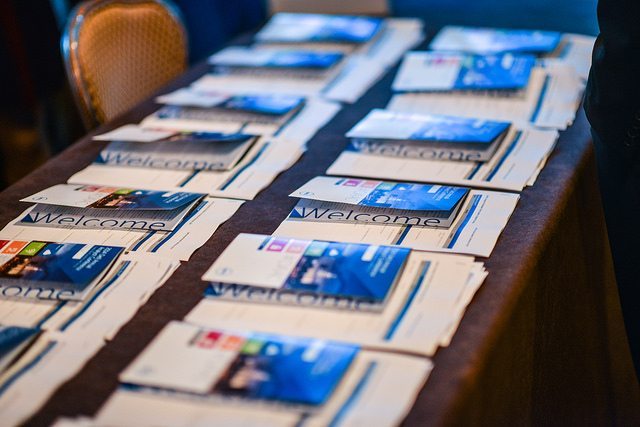 A couple of weeks ago, I had the opportunity to go to Dell’s annual analyst conference (DAAC), an event I’ve attended for many years. The big difference this year, of course, is that this is the first DAAC since Michael Dell took his now 30-year old company private several months ago.
A couple of weeks ago, I had the opportunity to go to Dell’s annual analyst conference (DAAC), an event I’ve attended for many years. The big difference this year, of course, is that this is the first DAAC since Michael Dell took his now 30-year old company private several months ago.
As a longtime Dell watcher, I’ve been tracking Dell’s journey from hardware vendor to become an end-to-end IT solutions and services provider (see my 2011, 2012 and 2013 perspectives). The event persuaded me that Dell is well on its way to accomplishing its mission to reinvent itself and offer customers a differentiated, more cost-effective and easier-to-use IT experience.
Why? Because Michael Dell has not only unchained his company from Wall Street’s myopic quarterly demands, but because he is also building a powerful value proposition for customers that puts Dell on a solid comeback trail. Key evidence for Dell being on the right track include:
1. Customers increasingly view Dell as a key partner. Dell’s mission to engage in deeper conversations with customers of all sizes is paying off. At DAAC, customers used superlatives to describe how Dell is delivering more complete solutions, higher value, lower costs, and a better customer experience. For instance, Ted Colbert, Boeing CIO, discussed how the Dell relationship has expanded from day-to-day operations to some of the most strategic initiatives. He also described working with Dell as “purposeful,” in contrast to a more scatter shot approach of “just throwing hardware at us like some other vendors.” Exasol CEO Aaron Auld talked about how Dell “provided them with the support they needed to win new business and grow,” and Jenkon Director of Information Systems, Steve Shinsel described Dell’s end-to-end solutions support as “phenomenal.” Yes, I know vendors handpick customers to attend these events, but in addition to the unprecedented level of enthusiasm I heard from these customers, Dell’s aggregate NPS (Net Promoter Score) of 52 and 90% customer retention are best in class.
2. Business is growing. Since going private, Dell says it has added 18,000 new customers to its ranks and is seeing steady growth in it’s software and services businesses, among others. In fact, the company’s PC business has enjoyed five consecutive quarters of market share growth. I think customers were naturally anxious as they waited to see how things would play out, but are now giving Dell a vote of confidence with their wallets. Furthermore, the company appears to be headed toward profitable growth, according to CFO Tom Sweet, who told us the company paid down $1 billion of debt in the first quarter of this year. Dell’s goal is to get back to “investment grade” status within the next four years.
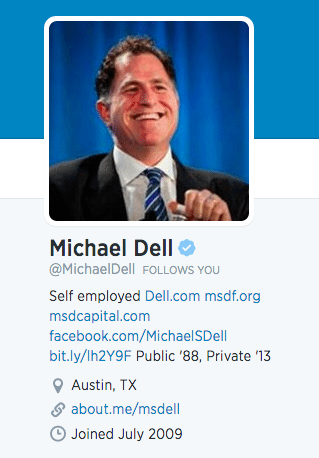 3. Entrepreneurial DNA runs deep and can now fully surface. Check out Michael Dell’s twitter handle! He knows what it takes to build a company from scratch, and being self-employed suits him. Freed up from Wall Street constraints, Dell can again operate in both a more strategic and agile fashion, and infuse employees with the entrepreneurial spirit as well. Dell’s high-level strategy remains the same to bring complete IT solutions to customers, be accessible and listen to what customer want. But the company can now more easily place some new bets to fulfill this mission. For example, Dell is investing to become a value-added cloud broker, positioning itself as an advisor to customers, rather than an OEM. In a very cloudy world, Dell’s Switzerland approach should be attractive to many customers. Furthermore, Dell has upped itsR&D spending from 1.6% of revenue to 2.1%. Last but not least, its hard to think of a more socially savvy tech CEO—listening ears are on!
3. Entrepreneurial DNA runs deep and can now fully surface. Check out Michael Dell’s twitter handle! He knows what it takes to build a company from scratch, and being self-employed suits him. Freed up from Wall Street constraints, Dell can again operate in both a more strategic and agile fashion, and infuse employees with the entrepreneurial spirit as well. Dell’s high-level strategy remains the same to bring complete IT solutions to customers, be accessible and listen to what customer want. But the company can now more easily place some new bets to fulfill this mission. For example, Dell is investing to become a value-added cloud broker, positioning itself as an advisor to customers, rather than an OEM. In a very cloudy world, Dell’s Switzerland approach should be attractive to many customers. Furthermore, Dell has upped itsR&D spending from 1.6% of revenue to 2.1%. Last but not least, its hard to think of a more socially savvy tech CEO—listening ears are on!
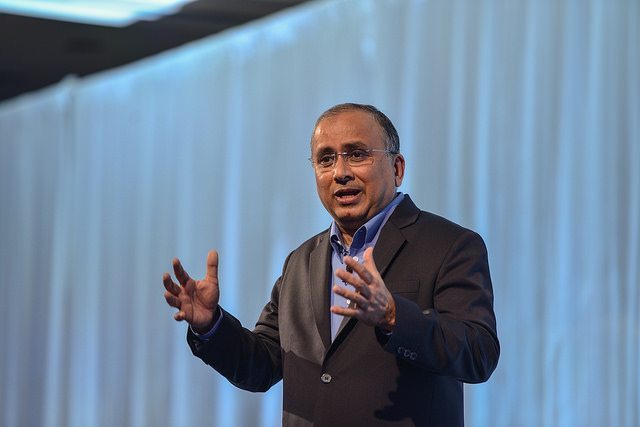 4. Execs and employees are all in. Other than customers, employees are any company’s best advocates. But, when there’s a lot of uncertainty in corporations, employees usually look for the nearest exit. But Dell is an exception. Despite a long, drawn out, uncertain and contentious (aka Carl Icahn) privatization process, Dell retained many of its top execs, such as Karen Quintos Senior VP and CMO; Jeff Clark Vice Chairman, Operations and President, Client Solutions; and Tom Sweet, Senior VP and CFO. Dell also attracted the fresh talent required for its transformation, including Andi Karaboutis, CIO; John Swainson, President, Software; Suresh C. Vaswani, President, Services. Renewed energy, excitement and loyalty were palpable in my conversations with employees too: when I asked how and why they stayed the course, they said they believed in Michael Dell’s vision—and several told me they bleed “Dell blue.”
4. Execs and employees are all in. Other than customers, employees are any company’s best advocates. But, when there’s a lot of uncertainty in corporations, employees usually look for the nearest exit. But Dell is an exception. Despite a long, drawn out, uncertain and contentious (aka Carl Icahn) privatization process, Dell retained many of its top execs, such as Karen Quintos Senior VP and CMO; Jeff Clark Vice Chairman, Operations and President, Client Solutions; and Tom Sweet, Senior VP and CFO. Dell also attracted the fresh talent required for its transformation, including Andi Karaboutis, CIO; John Swainson, President, Software; Suresh C. Vaswani, President, Services. Renewed energy, excitement and loyalty were palpable in my conversations with employees too: when I asked how and why they stayed the course, they said they believed in Michael Dell’s vision—and several told me they bleed “Dell blue.”
5. Investment in a collaborative partnering model. Dell’s direct connection to customers provides Dell with many advantages, and will continue to be a key route to market for the company. But, Dell is investing in the channel to ensure it can sell to and service customers in today’s increasingly omni-channel world. Dell has bridged what has sometimes been a gap in trust between it and the channel with a more collaborative partnering model. Dell is integrating regional channel and direct sales structures, paying Dell sales more for sales via the channel, and linking up regionally and locally with partners to pursue joint opportunities. Dell’s expanded portfolio also provides more partners with more headroom to grow with Dell. The results? Channel sales grew faster than direct sales in last quarter, and attach rates for channel sales are now within 3 to 4 points of the attach rates with Dell direct sales.
![]() 6. Ethics, sustainability and diversity. In May, Dell was recognized as a 2014 World’s Most Ethical Company by the Ethisphere Institute, an independent center of research promoting best practices in corporate ethics and governance. Quoting the Institute, the EI award is given to companies “that continue to raise the bar on ethical leadership and corporate behavior.” Dell has also been recognized as a leader in environmental sustainability for many years, and recently upped its commitment when it announced its 2020 Legacy of Good Plan. Among the 21 corporate responsibility goals outlined in the plan, Dell has set 12 goals specific to environmental sustainability. Building on existing initiatives, these 12 environmental goals focus on three areas: reducing the environmental impact of company operations, driving social and environmental responsibility in the industry and supply chain, and promoting technology’s role in addressing environmental challenges. Finally, Dell’s executive team and workforce are diverse. Dell has also stepped up to help women entrepreneurs via Dell Women’s Entrepreneur Network (DWEN). Recent research from The Intelligence Group’s Cassandra Report indicates that among millennials, 59% say that a company’s ethics and practices are important factors in deciding what brands to buy. Pretty powerful stuff—and very tough to fake.
6. Ethics, sustainability and diversity. In May, Dell was recognized as a 2014 World’s Most Ethical Company by the Ethisphere Institute, an independent center of research promoting best practices in corporate ethics and governance. Quoting the Institute, the EI award is given to companies “that continue to raise the bar on ethical leadership and corporate behavior.” Dell has also been recognized as a leader in environmental sustainability for many years, and recently upped its commitment when it announced its 2020 Legacy of Good Plan. Among the 21 corporate responsibility goals outlined in the plan, Dell has set 12 goals specific to environmental sustainability. Building on existing initiatives, these 12 environmental goals focus on three areas: reducing the environmental impact of company operations, driving social and environmental responsibility in the industry and supply chain, and promoting technology’s role in addressing environmental challenges. Finally, Dell’s executive team and workforce are diverse. Dell has also stepped up to help women entrepreneurs via Dell Women’s Entrepreneur Network (DWEN). Recent research from The Intelligence Group’s Cassandra Report indicates that among millennials, 59% say that a company’s ethics and practices are important factors in deciding what brands to buy. Pretty powerful stuff—and very tough to fake.
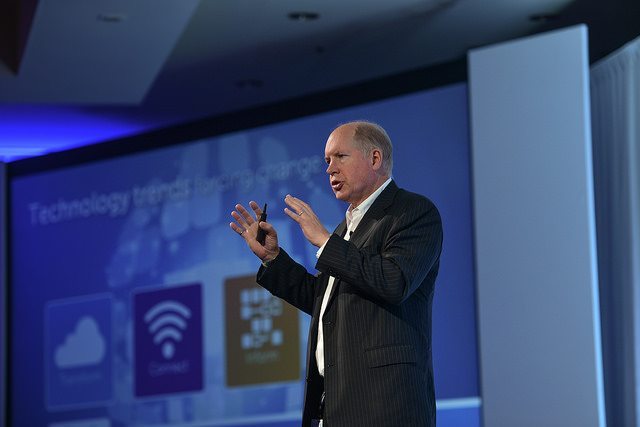 7. Stringing pearls instead of looking for one big rock. Dell has been investing strategically to acquire the IP and expertise it needs to package software and services in a more digestible way. While the theme at last year’s DAAC centered on the 12 acquisition Dell made, this year, the vendor spent more time discussing progress to integrate them and bring more complete solution value to customers. For instance, John Swainson discussed how, in the mobile management area, Dell combined Wsye, KACE and other assets for a single enterprise mobile management (EMM) solution to manage PCs, Macs and mobile devices. The vendor is looking to doing something similar in the cloud, giving customers a way to manage public, private, multi-cloud environments with open, scalable solutions. More recently, Dell acquired StatSoft, and intends to leverage this to reduce entry costs and barriers for customers in the analytics area. Just as important, Swainson emphasized that Dell will follow “the 80/20 rule,” to keep its software solutions as simple as possible to acquire and use.
7. Stringing pearls instead of looking for one big rock. Dell has been investing strategically to acquire the IP and expertise it needs to package software and services in a more digestible way. While the theme at last year’s DAAC centered on the 12 acquisition Dell made, this year, the vendor spent more time discussing progress to integrate them and bring more complete solution value to customers. For instance, John Swainson discussed how, in the mobile management area, Dell combined Wsye, KACE and other assets for a single enterprise mobile management (EMM) solution to manage PCs, Macs and mobile devices. The vendor is looking to doing something similar in the cloud, giving customers a way to manage public, private, multi-cloud environments with open, scalable solutions. More recently, Dell acquired StatSoft, and intends to leverage this to reduce entry costs and barriers for customers in the analytics area. Just as important, Swainson emphasized that Dell will follow “the 80/20 rule,” to keep its software solutions as simple as possible to acquire and use.
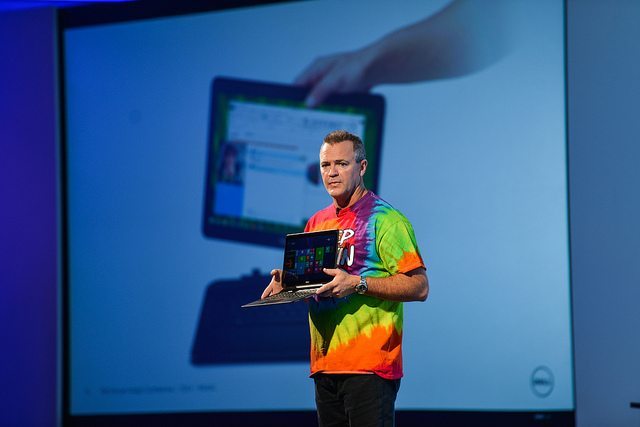 8. The PC isn’t dead! There’s no question that the traditional PC market is declining, but Jeff Clarke took the stage to the tune of “we are not dead yet” from Monty Python’s movie Spamalot to deliver his “Top 10 reasons the PC is (not) dead” message. Good news for Dell, as PCs are the entry point for 70% of new customers. Of course, Dell also offers a growing array of other client devices—from Wyse thin clients to Chromebooks to tablets and laptops.
8. The PC isn’t dead! There’s no question that the traditional PC market is declining, but Jeff Clarke took the stage to the tune of “we are not dead yet” from Monty Python’s movie Spamalot to deliver his “Top 10 reasons the PC is (not) dead” message. Good news for Dell, as PCs are the entry point for 70% of new customers. Of course, Dell also offers a growing array of other client devices—from Wyse thin clients to Chromebooks to tablets and laptops.
9. SMB growth and focus. Good segue from #8, as Dell’s fastest growing client business is the SMB market, which grew 28% in the last quarter. In my opinion, the “personal” in PC translates into Dell’s capability to expand SMB business into other solution areas. Furthermore, in an age of technology consumerization, consumer, prosumer and small business are inextricably linked. PCs provide Dell with a launch pad to expand SMB business into other areas. Dell’s direct model, which enables Dell to reach deep into SMBs, its continued focus on listening to customers, its new, collaborative partnering model and vision to sell more value at lower cost, should help keep Dell on this SMB growth trajectory.
In a nutshell, this isn’t your father’s Dell—or Wall Street’s Dell. It is Michael Dell’s Dell now, and it’s starting to benefit not only from being a private company, but also from the fact that as a private entity, it can more fully capitalize on the equally advantageous qualities summarized above.

Laurie
Thank you for this great piece. I just saw this as this is the day I had my shoulder procedure. Sorry I missed it!